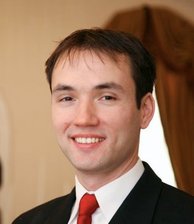Sarvis Notches 3rd Best Libertarian Gubernatorial Mark in US History
The Virginian has the best showing in a gubernatorial race for a Libertarian in 11 years and easily records the third best showing in party history

Sarvis won 6.5 percent of the vote Tuesday in a competitive contest won by Democratic nominee Terry McAuliffe over Republican Ken Cuccinelli.
That marks the third best ever performance by a Libertarian in a gubernatorial election since the founding of the party in the early 1970s.
(Note: Excluded are write-in candidates or candidates appearing on the ballot as an independent who may have received a Libertarian endorsement (e.g. Ed Clark’s independent bid in California’s 1978 race where he won 5.5 percent of the vote)).
A total of 208 candidates have appeared on the gubernatorial general election ballot as Libertarians over the decades through the 2013 cycle, and only two won a larger percentage of the vote than Sarvis.
The best ever showing by a Libertarian gubernatorial candidate came in Alaska in 1982 with nominee Dick Randolph.
Randolph was a former Republican State Representative in the early 1970s who became the first Libertarian elected to state government in the country, winning two additional terms as a Libertarian in the Alaska House in 1978 and 1980.
In 1982, Randolph was the Libertarian nominee for governor and won 14.9 percent behind Democratic winner Bill Sheffield and Republican Tom Fink.
Wisconsin’s Ed Thompson (brother of former four-term GOP governor and then Secretary of Health and Human Services Tommy Thompson) owns the silver medal with the 10.5 percent he won in 2002 as Republican incumbent Scott McCallum fell to Democrat Jim Doyle by just 3.7 points.
Prior to Sarvis, the only other Libertarian to reach 5 percent in a race for governor was Arizona’s Sam Steiger in 1982.
Steiger was a former five-term Republican U.S. Representative and the GOP 1976 U.S. Senate nominee (losing to Dennis DeConcini) and received 5.1 percent of the gubernatorial vote in 1982 in a race won by Democratic incumbent Bruce Babbitt.
Interestingly, Democrats were victorious in each of these four races in which Libertarians captured at least five percent of the vote.
Overall, 20 Libertarians have reached three percent of the vote in races for governor since the 1970s.
Top 20 Libertarian Gubernatorial Performances in U.S. History
|
Rank
|
Year
|
State
|
Candidate
|
Percent
|
|
1
|
1982
|
Alaska
|
Dick Randolph
|
14.9
|
|
2
|
2002
|
Wisconsin
|
Ed Thompson
|
10.5
|
|
3
|
2013
|
Virginia
|
Robert Sarvis
|
6.5
|
|
4
|
1982
|
Arizona
|
Sam Steiger
|
5.1
|
|
5
|
1990
|
New Hampshire
|
Miriam Luce
|
4.9
|
|
6
|
1997
|
New Jersey
|
Murray Sabrin
|
4.7
|
|
7
|
2002
|
Oregon
|
Tom Cox
|
4.6
|
|
8
|
1994
|
New Hampshire
|
Steven Winter
|
4.4
|
|
9
|
1992
|
North Carolina
|
Scott McLaughlin
|
4.1
|
|
9
|
1994
|
South Dakota
|
Nathan Barton
|
4.1
|
|
11
|
2010
|
Georgia
|
John Monds
|
4.0
|
|
11
|
2012
|
Indiana
|
Rupert Boneham
|
4.0
|
|
11
|
1992
|
New Hampshire
|
Miriam Luce
|
4.0
|
|
14
|
1998
|
Wyoming
|
Dave Dawson
|
3.9
|
|
15
|
2012
|
Montana
|
Ronald Vandevender
|
3.8
|
|
15
|
2006
|
Georgia
|
Garrett Hays
|
3.8
|
|
17
|
1998
|
Georgia
|
Jack Cashin
|
3.4
|
|
18
|
1984
|
Montana
|
Larry Dodge
|
3.3
|
|
18
|
1990
|
Texas
|
Jeff Daiell
|
3.3
|
|
20
|
1994
|
Arizona
|
John Buttrick
|
3.1
|
Table compiled by Smart Politics.
Follow Smart Politics on Twitter.

1. “…Democrats…four…Libertarians…at least five percent…” Sam Steiger’s 5.1% (AZ-1982), unlike Sarvis, Thompson, and Randolph, can not be said to have swayed (tainted?) the overall result, since 2-term incumbent Bruce Babbitt was re-elected with about 62% of the vote.
2. Is the recent R primary also-ran Corey Stewart launching a write-in gubernatorial bid, presuming that the commonwealth election statute permits it?